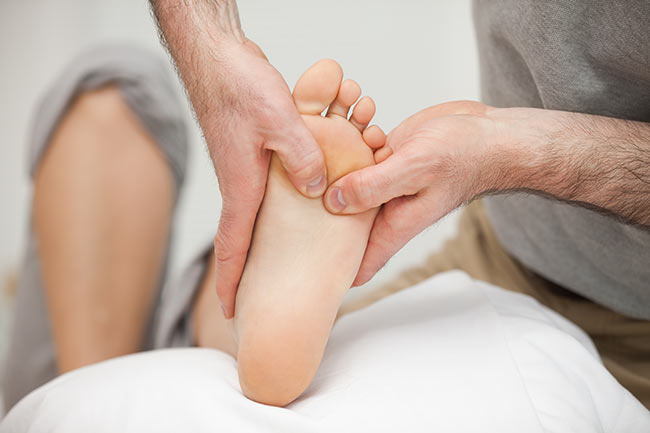Trigger Point Dry Needling
Trigger point dry needling is a physical therapy treatment technique used to address painful limitations caused by both active and latent trigger points. Trigger point dry needling in conjunction with manual physical therapy, therapeutic exercise and other skilled physical therapy interventions has shown to be successful in accelerating treatment of numerous musculoskeletal pathologies.
Trigger point dry needling requires highly specialized training. Few medical professionals are trained in the evaluation and treatment of trigger points. Trigger point dry needling can be very effective in treating pain of a myofascial (chronic pain) origin. Dry needling has been the difference-maker for many patients. It’s an option to consider for pain relief.
What conditions can be treated?
- Muscle tightness
- Sports injuries
- Neck and back pain
- Headaches/migraines related to tension and neuromuscular pain within the cervical spine
- Chronic pain syndrome
- Hamstring problems
- Pain related symptoms that have not resolved through traditional treatment methods
How does trigger point dry needling work?
Trigger point dry needling is thought to work by disrupting a reflex arc of contracted tissue to allow improved blood flow and healing to the area, as well as stimulating biochemical changes. Dry needling uses a very thin filament needle. The needle is inserted into the trigger point and a local twitch response is ideally elicited. This twitch response is an involuntary contraction of the muscle that allows the muscle to relax. The needle used is similar to an acupuncture needle, but is not considered acupuncture and is based on Western physiologic approaches. Electrical stimulation with heat can also be applied to the needle to elicit these twitches to help the muscle relax.
What are trigger points?
Trigger points are extremely irritated contraction knots found in tight bands of muscles. They are a common cause of pain and muscle tightness and can affect the local area of pain. Trigger points can refer to parts of the body, which can all effect strength, flexibility and muscle coordination.
What does dry needling feel like?
The filament needle used is not like a hypodermic needle you would see at a doctor's office. A filament needle is very thin, solid and flexible, whereas a hypodermic needle is thicker and hollow, with a blade tip. The filament needle used in dry needling pushes through the skin much more comfortably. Once the needle enters the trigger point, the patient will feel the muscle “grab,” twitch and then release. After the dry needling treatment, patients feel immediate improvement. However, there is usually some soreness for one or two days, followed by relief of symptoms.
When can I get started?
Progressive Physical Therapy is offering trigger point dry needling treatment in our offices where the physical therapist is a certified TDN. Expect other centers throughout South Carolina to have certified TDN therapists in the near future.
Plantar Fasciitis
Plantar fasciitis is a painful inflammatory process of the plantar fascia.
The plantar fascia is a thick fibrous ligament originating on the bottom surface of the calcaneus (heel bone) and extending along the sole of the foot toward the toes. It has been reported that plantar fasciitis occurs in 2 million Americans a year and 10 percent of the population over a lifetime.
Repeated strain of the plantar fascia can cause tiny tears in the ligament. These can lead to pain and swelling. This is more likely to happen if:
- Your feet roll inward too much when you walk (excessive pronation ).
- You have high arches or flat feet.
- You walk, stand or run for long periods of time, especially on hard surfaces.
- You are overweight.
- You wear shoes that don't fit well or are worn out.
- You have tight Achilles tendons or calf muscles.
Your physician may recommend physical therapy because of your plantar fasciitis diagnosis, and Progressive Physical Therapy offers treatment options to assist in your recovery.




